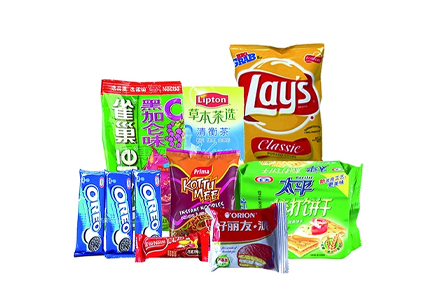en
Solvent-free lamination processes, equipment, and adhesives were developed in the 1970s, evolving from the first generation of products to the third generation.
The first generation of solvent-free adhesives were single-component, moisture-cure adhesives. The chemical structure of single-component, moisture-cure polyurethane solvent-free adhesives consists of polyester or polyether with relatively short chain isocyanate end groups. The isocyanate groups (-NCO) react with moisture in the substrate or environment, releasing CO2 to cure.
To overcome the disadvantages of single-component adhesives, two-component solvent free polyurethane adhesive was developed. Based on initial tack and resistance to boiling, two-component polyurethane solvent-free adhesives can be divided into second and third generations.
The second-generation solvent-free adhesives were first applied to composite packaging materials in the early 1980s.
The third-generation solvent-free adhesives have overcome the disadvantages of the second-generation, featuring high initial tack, low viscosity, low operating temperature, and no restrictions on composite substrates. They resolve issues of poor heat-sealing with EVA and Nylon and the problems of wrinkling or delamination in high-barrier films, making them suitable for compositing various plastic films and foils, reducing the content of free diisocyanates, and offering excellent resistance to contents. The adhesive’s bond strength and resistance to heat have also been improved, potentially enabling aluminum-plastic laminated products to withstand high-temperature boiling.
(1) Use of an anti-catalytic system.
(2) Reduced viscosity of the adhesive, improved wetting properties on films, and improved dispersion ability of the adhesive on film surfaces. Therefore, not only does it enhance the quality of solvent-free laminate products but also increases production speed and efficiency.
Solvent-free polyurethane adhesives have nearly 30 years of development history, with their performance increasingly maturing. In the context of green environmental protection and low-carbon economy, solvent-free adhesives are favored globally for their superior economy, safety, and environmental protection, as well as the continuous development of composite processes and equipment in Germany, the United States, Japan, and worldwide. In Europe and America, the usage of solvent-free polyurethane adhesives has rapidly increased from 10% twenty years ago to over half today. In Japan, since the introduction of the first solvent-free dry lamination machine in 1977, in less than 20 years, it has developed to now have nearly 100 solvent-free lamination equipments.
After decades of development and application, solvent-free and solvent-free composite technologies have become quite mature. Using solvent-free adhesive to laminate films can reduce energy consumption, improve production efficiency, improve product quality, and lower comprehensive production costs. Being solvent-free benefits environmental protection and clean production and ensures the composites’ non-contamination to packaged food and drugs.
It is believed that with the enhanced quality of China's composite products and food hygiene safety awareness, the strengthening of energy-saving and environmental protection awareness, solvent-free compositing will increasingly attract the attention of the composite packaging industry. The good operation of existing solvent-free composite equipment in China and its demonstrative effect will accelerate the transition of the soft packaging industry from solvent-based to solvent-free compositing. Under the willingness of the composite film industry to understand, research, and use solvent-free compositing, alongside the push of national energy-saving and emission reduction policies, solvent-free compositing is poised for vigorous development, becoming the main compositing method in China's composite film industry.
High Bond is one of the industrial laminating adhesive manufacturers that regards innovation and sustainable development as life. As a leader in flexible packaging adhesives, High Bond is committed to providing high-quality adhesive products that meet economic interests (Economical), environmental protection (Ecological), and social responsibility (Social), helping packers comply with regulations, and bringing safety and convenience to a wide range of families with soft packaging.

This is the first one.